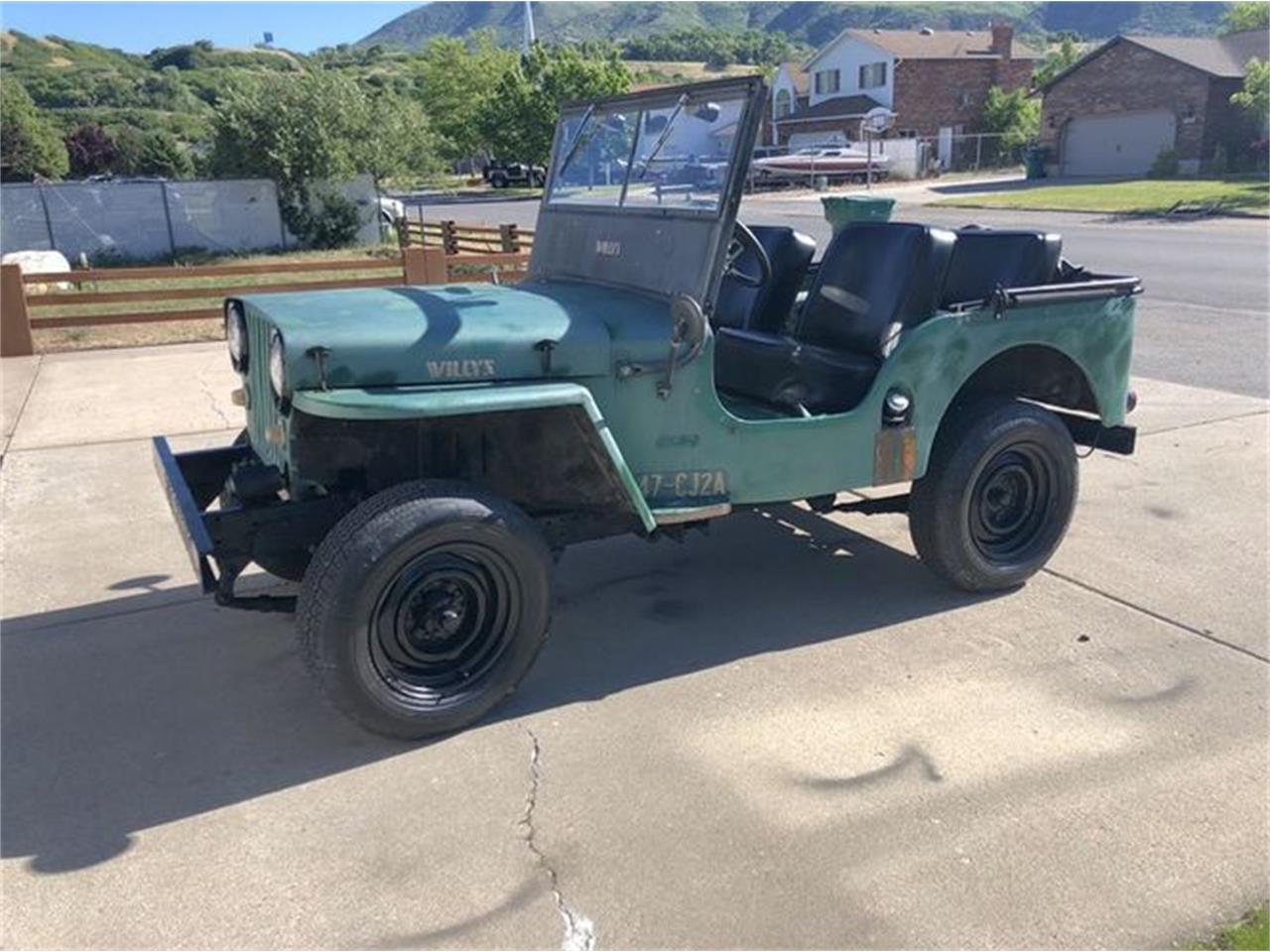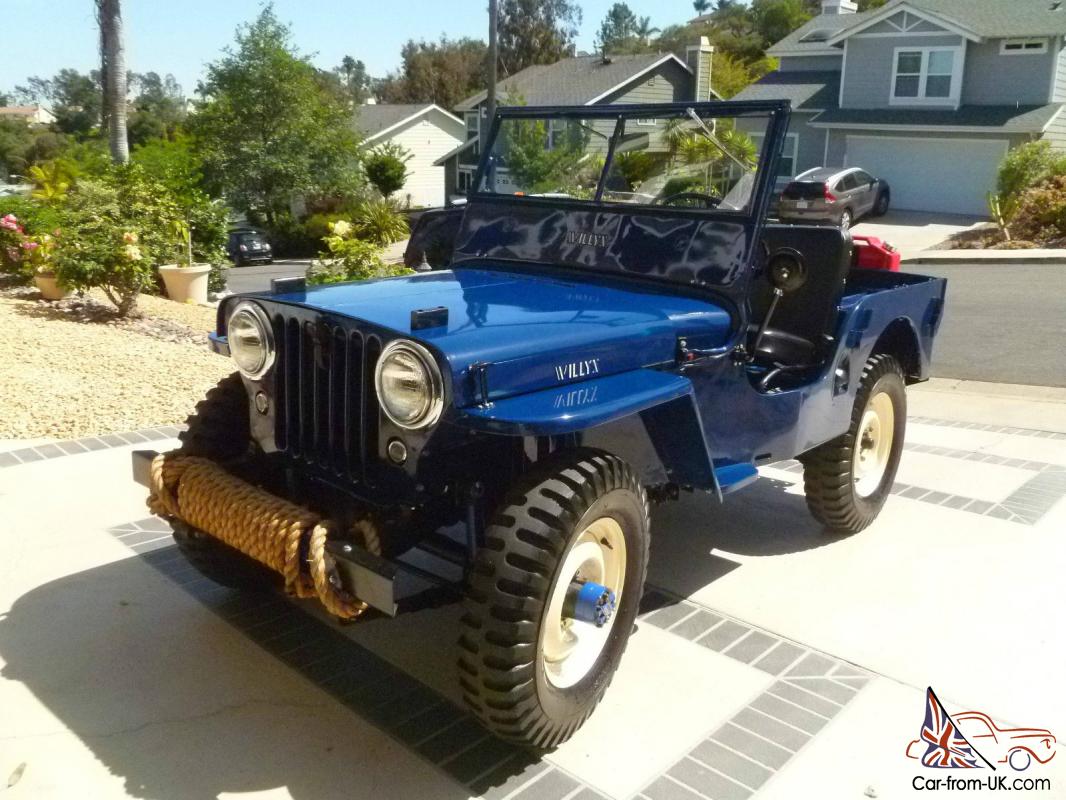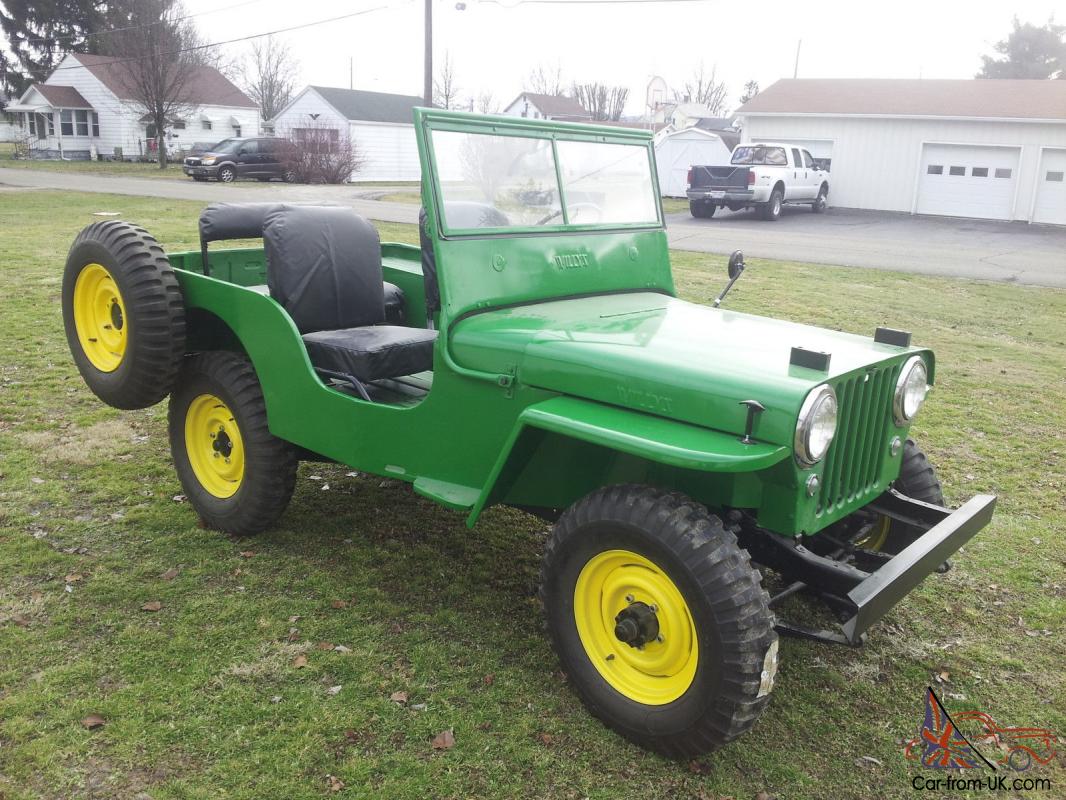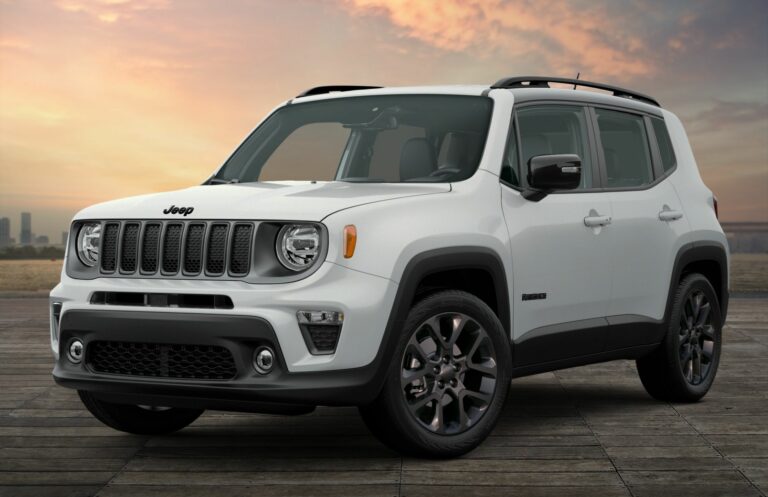47 Willys Jeep For Sale: A Comprehensive Guide to Acquiring an Automotive Icon
47 Willys Jeep For Sale: A Comprehensive Guide to Acquiring an Automotive Icon /jeeps.truckstrend.com
Introduction: The Enduring Allure of the 1947 Willys Jeep
The year 1947 stands as a pivotal moment in automotive history, marking a period where the rugged utility of wartime innovation seamlessly transitioned into civilian life. At the forefront of this transformation was the Willys-Overland Jeep, a vehicle that had proven its mettle on battlefields worldwide and was now ready to conquer farms, ranches, and open roads. The "47 Willys Jeep for sale" isn’t just an advertisement; it’s an invitation to own a piece of American heritage, a testament to simplicity, durability, and a go-anywhere spirit.
47 Willys Jeep For Sale: A Comprehensive Guide to Acquiring an Automotive Icon
More than just a mode of transport, the 1947 Willys Jeep (primarily the CJ-2A model) represents a significant cultural artifact. It embodies post-war optimism, the rise of recreational four-wheeling, and the very genesis of what would become the global Jeep brand. For enthusiasts and collectors, finding a 1947 Willys Jeep for sale offers the opportunity to connect with a simpler era of motoring, characterized by mechanical transparency and an undeniable charm. Whether you’re a seasoned collector, a restoration enthusiast, or simply someone yearning for a piece of authentic Americana, understanding the nuances of acquiring one of these timeless machines is crucial. This comprehensive guide aims to equip you with the knowledge needed to navigate the market for a 47 Willys Jeep for sale, ensuring a rewarding purchase.
The Enduring Legacy: Why the 1947 Willys Jeep Remains Desirable
The 1947 Willys CJ-2A, often simply referred to as the ‘Civilian Jeep,’ built upon the legendary MB model’s robust foundation but incorporated features tailored for civilian use. It retained the iconic flat-fender design, the legendary "Go-Devil" L-head four-cylinder engine, and the rugged T-90 manual transmission with a Dana 18 transfer case, providing excellent low-range capability.
Its desirability stems from several factors:
- Historical Significance: As one of the earliest civilian Jeeps, it’s a direct descendant of the vehicle that helped win WWII, making it a foundational piece of automotive history.
- Simplicity and Durability: Designed for hard work, these Jeeps are mechanically straightforward, making them relatively easy to maintain and repair, even for novice mechanics. Their robust construction ensures they can still handle demanding tasks today.
- Iconic Design: The unmistakable silhouette, exposed fenders, and functional aesthetics are instantly recognizable and universally loved. It’s a design that transcends trends.
- Versatility: From farm work and hunting to off-road adventures and parade duty, the 47 Willys Jeep is incredibly versatile.
- Community and Parts Availability: A vibrant community of Willys enthusiasts exists worldwide, offering support, advice, and a robust aftermarket for parts, making ownership more manageable than many other vintage vehicles.

What to Look For: Essential Considerations When Buying a 47 Willys Jeep
When a 47 Willys Jeep is for sale, a thorough inspection is paramount. These vehicles are over 75 years old, and their condition can vary wildly.

-
Rust and Body Condition: This is often the biggest determinant of a Jeep’s value and the cost of restoration.
- Frame: Inspect the frame rails for cracks, bends, or severe rust, especially around spring hangers and body mounts.
- Body Tubs: The original steel body tubs are notorious for rusting, particularly the floorboards, hat channels (the support structures under the floor), and the areas around the wheel wells and cowl. Reproduction tubs are available but can be costly.
- Fenders, Hood, Grille: Check for dents, previous repairs, and rust.
- Windshield Frame: Prone to rust at the bottom, where it meets the cowl.

-
Mechanical Condition:
- Engine (Go-Devil L-134): Listen for unusual noises (knocks, rattles), check for excessive smoke from the exhaust (blue for oil, black for rich fuel, white for coolant), and look for oil leaks. A compression test is highly recommended.
- Transmission (T-90) & Transfer Case (Dana 18): Check for grinding gears, difficulty shifting, and excessive noise. Ensure the 4WD system engages properly in both high and low range.
- Axles (Dana 25 Front, Dana 41/44 Rear): Look for leaks from the differential covers and axle seals. Check for play in the U-joints.
- Steering & Suspension: Inspect steering linkage for wear, excessive play in the steering wheel, and condition of leaf springs and shock absorbers.
- Brakes: These are typically drum brakes all around. Check pedal feel (spongy indicates air or leaks), effectiveness, and condition of lines.
-
Originality vs. Modification:
- Originality: For collectors, matching numbers (engine, frame, body if possible) and original components add significant value. Look for original gauges, steering wheel, seats, and specific CJ-2A features like the tailgate (a distinguishing feature from the MB).
- Modifications: Many Willys Jeeps have been modified over the years. Common modifications include engine swaps (e.g., V6 or V8), transmission upgrades, power steering, disc brake conversions, or lift kits. While these can improve driveability, they typically reduce collector value. Understand what modifications have been made and if they were done professionally.
-
Paperwork and Ensure the vehicle has a clear title that matches the VIN/serial number on the frame. Verify the seller’s ownership.
Understanding the States of a ’47 Willys Jeep For Sale
When browsing for a 47 Willys Jeep for sale, you’ll encounter vehicles in various conditions, each commanding a different price point and requiring different levels of commitment:
- Barn Find/Project: These are often non-running, heavily rusted, or incomplete vehicles. They represent the lowest entry point but require extensive mechanical skills, a large budget for parts, and significant time for a full restoration. Ideal for the dedicated restorer.
- Driver Quality: These Jeeps are running and driving, but typically show their age with faded paint, minor dents, some rust, and possibly some mechanical quirks. They are great for immediate enjoyment and can be improved over time. Expect some ongoing maintenance.
- Nicely Restored: These vehicles have undergone a significant restoration, addressing rust, paint, and mechanicals. They might not be 100% historically accurate but look great and drive well. These are suitable for enthusiasts who want to enjoy a classic without the upfront restoration effort.
- Concours/Museum Quality: These are meticulously restored to original factory specifications, often with painstaking attention to historical accuracy and detail. They command the highest prices and are typically trailered to shows rather than driven extensively.
The Buying Process: Practical Advice for a Successful Acquisition
- Research Thoroughly: Before you even look at a specific 47 Willys Jeep for sale, educate yourself on the CJ-2A model’s specifics, common issues, and market values. Join online forums and owner groups.
- Set a Realistic Budget: Beyond the purchase price, factor in potential restoration costs, parts, tools, insurance, and transportation.
- Inspect in Person: Never buy a vintage vehicle sight unseen. Bring a knowledgeable friend or mechanic if you’re not confident in your own inspection skills.
- Pre-Purchase Inspection (PPI): If the Jeep is a significant investment, consider hiring a specialist mechanic or classic car inspector to perform a PPI.
- Negotiate Wisely: Be prepared to negotiate based on your inspection findings and market research. Don’t be afraid to walk away if something feels wrong.
- Verify Documentation: Double-check the VIN/serial number on the frame against the title. Ensure there are no liens.
- Plan for Transport: A non-running or partially restored Willys will need to be trailered. Even running ones might benefit from trailering over long distances.
Owning and Maintaining Your Classic Willys: Tips and Solutions
Owning a 47 Willys Jeep is a rewarding experience, but it comes with responsibilities.
- Regular Maintenance is Key: These vehicles are simple, but they need consistent attention. Regular oil changes, lubrication of chassis points, checking fluid levels, and inspecting brakes are crucial.
- Parts Availability: Fortunately, the Willys CJ-2A shares many components with other post-war Jeeps, and a robust aftermarket exists. Suppliers like Omix-ADA, Kaiser Willys, and Walck’s 4WD specialize in these parts. Reproduction body panels, mechanical components, and even electrical systems are readily available.
- Join the Community: Engaging with other Willys owners through clubs, online forums, and events provides invaluable support, technical advice, and a sense of camaraderie. Many common challenges have well-documented solutions within the community.
- Learn to Wrench: The simplicity of these Jeeps makes them an excellent platform for learning basic automotive mechanics. Invest in a good shop manual (like the original Willys service manual).
- Driving Characteristics: Be aware that a 47 Willys Jeep will drive very differently from a modern vehicle. Expect manual steering, drum brakes (requiring more stopping distance), a rougher ride, and slower highway speeds. Embrace its quirks.
47 Willys Jeep For Sale: Estimated Price Guide
The price of a 1947 Willys Jeep for sale varies significantly based on its condition, originality, and location. This table provides a general estimate:
| Condition Category | Description | Estimated Price Range (USD) | Key Characteristics |
|---|---|---|---|
| Barn Find / Project | Non-running, significant rust, incomplete, major mechanical issues, requires full restoration. | $3,000 – $8,000 | Ideal for skilled restorers; high potential for hidden costs; often sold "as-is" with limited documentation. |
| Driver Quality | Running and driving, functional but shows age; faded paint, minor dents, some surface rust, needs TLC. | $9,000 – $18,000 | Can be enjoyed immediately; may have some non-original parts; suitable for gradual improvement; requires ongoing maintenance. |
| Nicely Restored | Repainted, mostly rust-free, rebuilt engine/drivetrain, clean interior, generally presentable and reliable. | $19,000 – $35,000 | Good for regular driving and local shows; often has modern upgrades (e.g., 12V conversion); a solid, ready-to-enjoy classic. |
| Concours/Museum Quality | Meticulously restored to original factory specifications; historically accurate, pristine condition. | $36,000 – $60,000+ | Show-winning quality; matching numbers; rarely driven; for serious collectors or enthusiasts seeking the absolute best example. |
Note: These are estimates and actual prices can vary based on market demand, specific features, and seller motivation. Prices for modified or custom builds can fall outside these ranges.
Frequently Asked Questions (FAQ) about the 47 Willys Jeep
Q1: Are parts for a 1947 Willys Jeep hard to find?
A1: No, surprisingly. Due to the popularity and longevity of the CJ-2A and its shared components with later CJ models, there’s a robust aftermarket for both new reproduction parts and used original components. Several dedicated suppliers specialize in Willys Jeep parts.
Q2: Can a 47 Willys Jeep be a daily driver?
A2: While technically possible, it’s generally not recommended for modern daily driving. They lack modern safety features (airbags, crumple zones), have slower highway speeds (typically comfortable up to 45-50 mph), manual steering, and drum brakes that require more stopping distance. They are best suited for recreational use, short trips, or as a secondary vehicle.
Q3: What’s the fuel economy like?
A3: The Go-Devil L-134 engine is not known for its fuel efficiency by modern standards. Expect anywhere from 12-18 miles per gallon, depending on driving conditions, terrain, and engine tuning.
Q4: Is it difficult to drive a 47 Willys Jeep?
A4: It’s different, but not difficult once you get used to it. Manual steering requires more effort, especially at low speeds. The non-synchronized first gear means you often have to start in second or double-clutch into first. The ride is firm, and road noise is significant. It’s a very engaging, hands-on driving experience.
Q5: How much does insurance cost for a classic Willys Jeep?
A5: Classic car insurance policies are often very affordable compared to standard auto insurance because they account for limited mileage and careful storage. Rates vary based on agreed value, location, and driving record, but typically range from a few hundred dollars per year.
Q6: What’s the difference between a CJ-2A and a military MB?
A6: While visually similar, the CJ-2A has civilian-specific features: a tailgate, larger headlights, a side-mounted spare tire, a column-mounted windshield wiper motor, and a ‘Willys’ script on the hood. The MB has military features like blackout lights and specific mounting points for military equipment.
Conclusion: Embracing the Legacy of the 47 Willys Jeep
The hunt for a "47 Willys Jeep for sale" is more than just a transaction; it’s an embarkation on a journey into automotive history. These remarkable vehicles offer a tangible connection to a post-war era of ingenuity and resilience, embodying a spirit of utilitarianism and adventure that few modern vehicles can match. Whether you aspire to undertake a meticulous restoration, enjoy casual weekend drives, or simply preserve a piece of American heritage, a 1947 Willys Jeep promises a uniquely engaging and rewarding ownership experience.
By understanding what to look for, setting realistic expectations, and leveraging the passionate community that surrounds these iconic machines, you can confidently navigate the market. Owning a 47 Willys Jeep isn’t just about driving; it’s about connecting with a legacy, embracing simplicity, and becoming a steward of an enduring automotive icon. The open road, and a piece of history, await.



